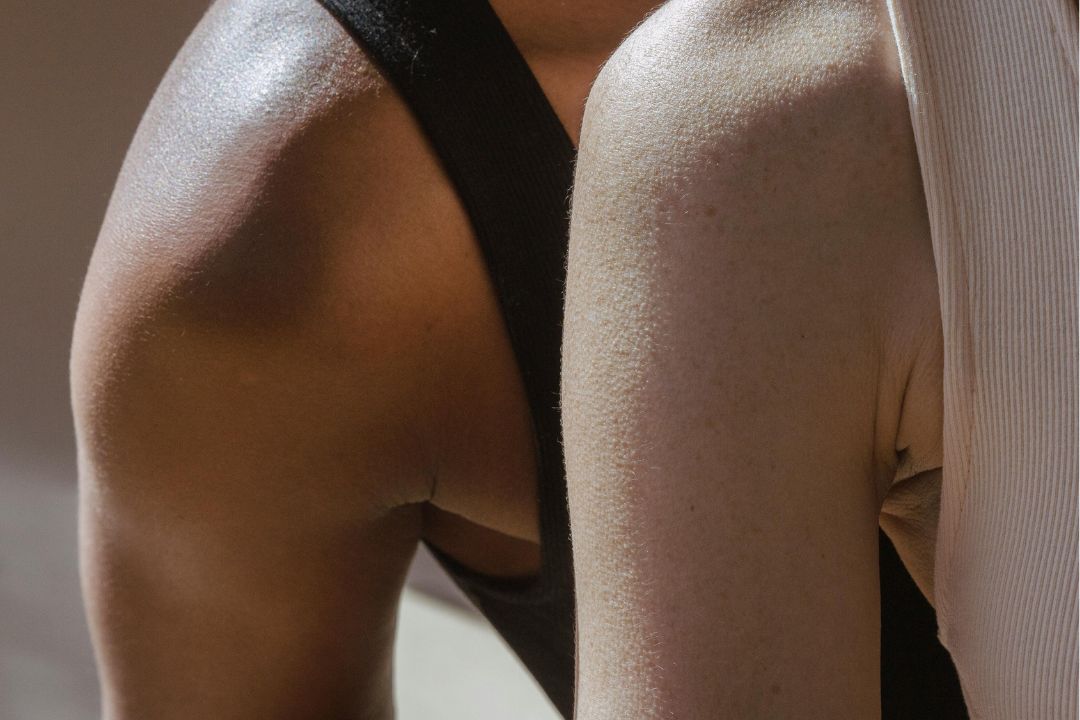What’s Really in Your Deodorant: Aluminum & Synthetic Fragrance

If you’ve ever looked at the back of your deodorant and thought, “Wait, what am I actually putting on my skin every day?” — you’re not alone.
At AporeNaturals, we believe that personal care should feel personal — safe, effective, and good for your body. So let’s walk through two common deodorant ingredients that get a lot of buzz: aluminum (yes, even the “natural” ones like potassium alum) and synthetic fragrance. We’re not here to scare you — but we do think it’s important to understand what these ingredients do, and how they might be affecting your health.
First: Deodorant vs Antiperspirant (yep, they’re different)
Let’s clear this up, because the two are often used interchangeably:
-
Deodorants help neutralize body odor. They usually do this by reducing the bacteria that feed on sweat.
-
Antiperspirants are designed to block sweat altogether — most often by using aluminum salts to plug your sweat ducts.
At AporeNaturals, we believe sweat is natural — it’s part of your body’s detox and cooling process. Blocking it entirely can interfere with how your body works. Instead, we focus on helping you smell fresh and feel comfortable while still allowing your skin to breathe.
So, What’s the Deal with Aluminum?
Aluminum salts—like aluminum chlorohydrate—are often the main ingredient in traditional antiperspirants. Their job? To block your sweat glands and stop you from sweating altogether.
Even “natural crystal deodorants” (like those using potassium alum) work in a similar way. They’re often marketed as safer, but chemically speaking, they’re still aluminum salts. The method of delivery might be gentler, but your body is still absorbing trace amounts of aluminum through your skin.
What Does the Science Say?
Some studies have found aluminum in breast tissue, and there’s been speculation about its ability to mimic estrogen—a hormone that, in excess, may influence breast cancer development. However, it’s worth noting that there’s no definitive link between aluminum in antiperspirants and breast cancer (yet?).
Still, we think it’s okay to ask: If I can stay fresh without it, why take the chance?
Here’s another important detail: only a small percentage of aluminum is absorbed through the skin (around 0.012%, according to some studies), but it can accumulate over time. Some people also report skin irritation, clogged pores, and increased sensitivity—especially during warmer months when we’re sweating more.
Wait—Even Crystal Deodorants Contain Aluminum?
Yes. The form is different (usually potassium alum or ammonium alum) and the particles are larger, which may reduce absorption. But chemically, they’re still aluminum-based. That “natural” crystal stick might not be quite as harmless as it seems. When reading labels, it’s worth knowing the difference.
“Aluminum-free” ≠ “Alum-free."
Now Let’s Talk About Synthetic Fragrance
“Fragrance” or "perfume" might sound harmless, but it’s often a blanket term for a mix of hundreds (sometimes thousands) of chemicals. Many of these are protected by trade secret laws, meaning companies don’t have to disclose exactly what’s inside.
Why That Matters
Some of these undisclosed ingredients—especially phthalates and parabens—are known endocrine disruptors. That means they can mess with your hormone balance, which in turn may affect everything from your mood to your reproductive health.
Plus, synthetic fragrance is a common cause of skin irritation, allergies, and even headaches for sensitive individuals. When it’s going on your underarms—where skin is thinner and more absorbent—those effects can feel even more amplified.
If you’re navigating hormonal changes (hi, pregnancy or postpartum!) or have skin that flares up easily, avoiding synthetic fragrance is often a game-changer.
For parents: If you’re buying deodorant for teens or pre-teens, keep in mind their bodies are still developing. Avoiding hormone disruptors like synthetic fragrance is one way to support their long-term health.
So What Can You Do Instead?
No pressure here—just options. At AporeNaturals, we created our formulas for people like us: folks who care about what they put on their bodies but don’t want to sacrifice feeling fresh.
Here’s what we suggest if you’re trying to avoid aluminum and synthetic fragrances:
✅ Check labels — Look for “aluminum-free” and brands that are transparent about every ingredient (including what’s behind the word “fragrance”).
✅ Try essential-oil-based scents — Natural doesn’t have to mean unscented. Lavender, bergamot, tea tree, eucalyptus… nature smells really good.
✅ Let your body detox gently — If you’re switching from antiperspirants, give yourself a week or two to adjust. Your skin (and your sweat glands) need time to recalibrate.
✅ Choose formulas that support your skin
That’s exactly what we’ve created at AporeNaturals — a line of deodorants powered by magnesium, plan-based extracts, and zero questionable additives. Check our range here.
Want to See What We Do Use Instead?
We’re all about transparency.
Take a peek at our ingredient list and you’ll find only what’s necessary: no aluminum, no parabens, no mystery fragrance blends—just skin-loving, science-backed ingredients that work with your body.
Final Thoughts
We’re not saying everyone needs to panic over their deodorant. But if you’re trying to be more mindful about what goes on (and into) your body — understanding the difference between ingredients like aluminum, potassium alum, and synthetic fragrance is a great place to start.
At the end of the day, you deserve personal care that works with your body, not against it. You sweat, you move, you show up for life — and your deodorant should support that, naturally.
Let us know if you have any questions or if you’ve been on your own underarm health journey. We love hearing your stories.
Want to Dive Deeper? Here’s What We Read:



